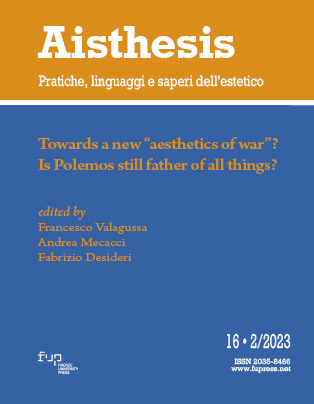Published 2024-02-06
Keywords
- Der Arbeiter,
- Herrschaft,
- Malheur,
- Renato Bertelli,
- Adolfo Wildt
How to Cite
Copyright (c) 2023 Antonio Dall'Igna

This work is licensed under a Creative Commons Attribution-NonCommercial 4.0 International License.
Abstract
The present paper analyses the relationship between the figures of the Arbeiter and the Krieger, described by Ernst Jünger, and their metaphysical context, that is, the becoming in which the catastrophe of war takes place. The analysis is conducted through a theoretical comparison with Simone Weil’s thought, in which war is considered as an extreme case of malheur, i.e., the manifestation of divinity as pure grace devoid of power. Two useful paradigms are thus outlined to explain the condition of the human being in the becoming: the paradigm of dominion (Jünger) and the paradigm of waiting (Weil). In the second part of the paper, those two options are associated with two art pieces, in order to visually represent the characteristics of dominion and waiting, showing the dramatic issue of the choice for dominion in the face of the catastrophe produced by technology.

